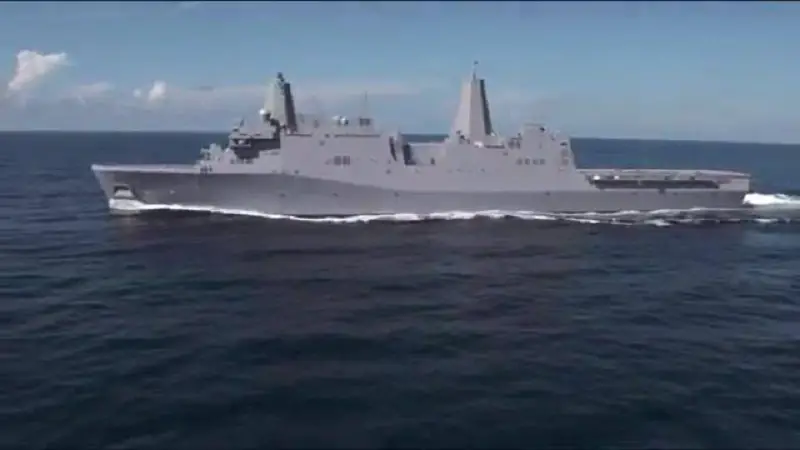
Huntington Ingalls Industries (HII) announced the successful completion of acceptance sea trials for the amphibious transport dock Portland (LPD 27). The San Antonio-class ship, built at HII’s Ingalls Shipbuilding division, spent last week with the U.S. Navy’s Board of Inspection and Survey (INSURV), performing more than 200 trial events that included both in-port and underway portions. USS Portland (LPD-27) will be the 11th San Antonio-class amphibious transport dock ship of the United States Navy. The vessel, launched 13 February 2016, is named in honor of the city of Portland, Oregon. Portland’s keel was laid down on 2 August 2013, at the Ingalls Shipbuilding yard in Pascagoula, Mississippi. The ship’s sponsor is Bonnie Amos, wife of U.S. Marine Corps Commandant Gen. James Amos. The ship was launched on 13 February 2016.
The San Antonio class is a class of amphibious transport docks, also called a landing platform/dock (LPD), used by the United States Navy. These warships replace the older Austin-class LPDs (including Cleveland and Trenton sub-classes), as well as the Newport-class tank landing ships, and the Charleston-class amphibious cargo ships that have already been retired. Twelve ships of the San Antonio class were proposed, but only eleven were funded. The San Antonio class was designed to provide the Navy and U.S. Marine Corps with modern, sea-based platforms that are networked, survivable, and built to operate with 21st century transformational platforms, such as the MV-22 Osprey, the (since canceled) Expeditionary Fighting Vehicle (EFV), air-cushioned landing craft (LCACs), and future means by which Marines are delivered ashore. The ship is more than 45 percent larger than the Austin class, displacing more than 25,000 tons at full load. It carries fewer troops, but has twice as much space for vehicles, landing craft, and aircraft. The San Antonio class has significant survivability features and computer technology. In addition to Rolling Airframe Missile (RAM) protection from air threats, the class was designed to minimize radar signature. Techniques that reduce radar cross-section (RCS) make the ships more difficult to locate and target.














